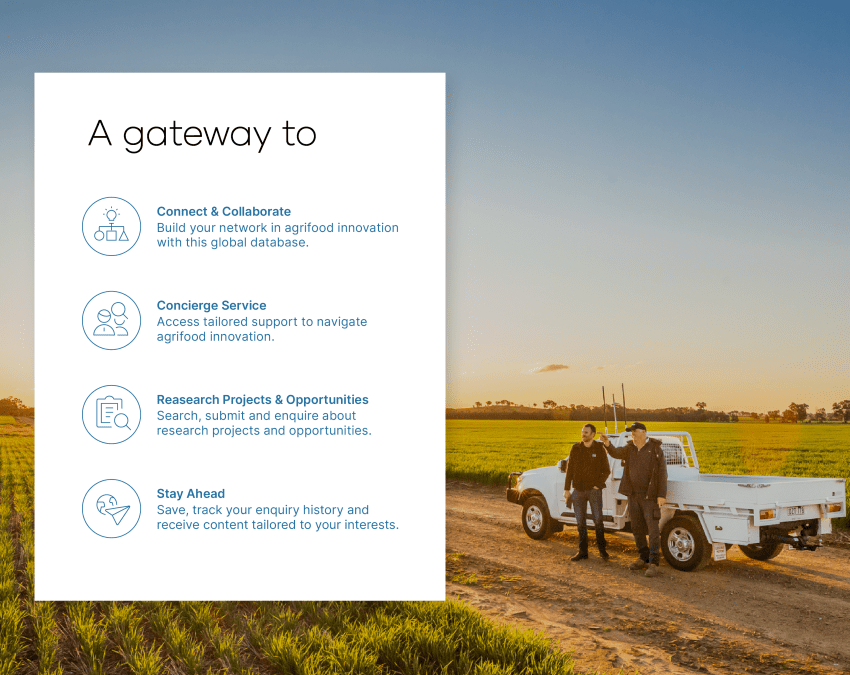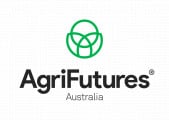
The rise of perennial wheat potential has everyone excited
The push to develop perennial wheats suitable for Australian conditions is gathering momentum. Delivering improved sustainability, on-farm profitability, and nutritional outcomes – perennial wheats have everyone from mixed farmers to artisan brewers and bakers excited.
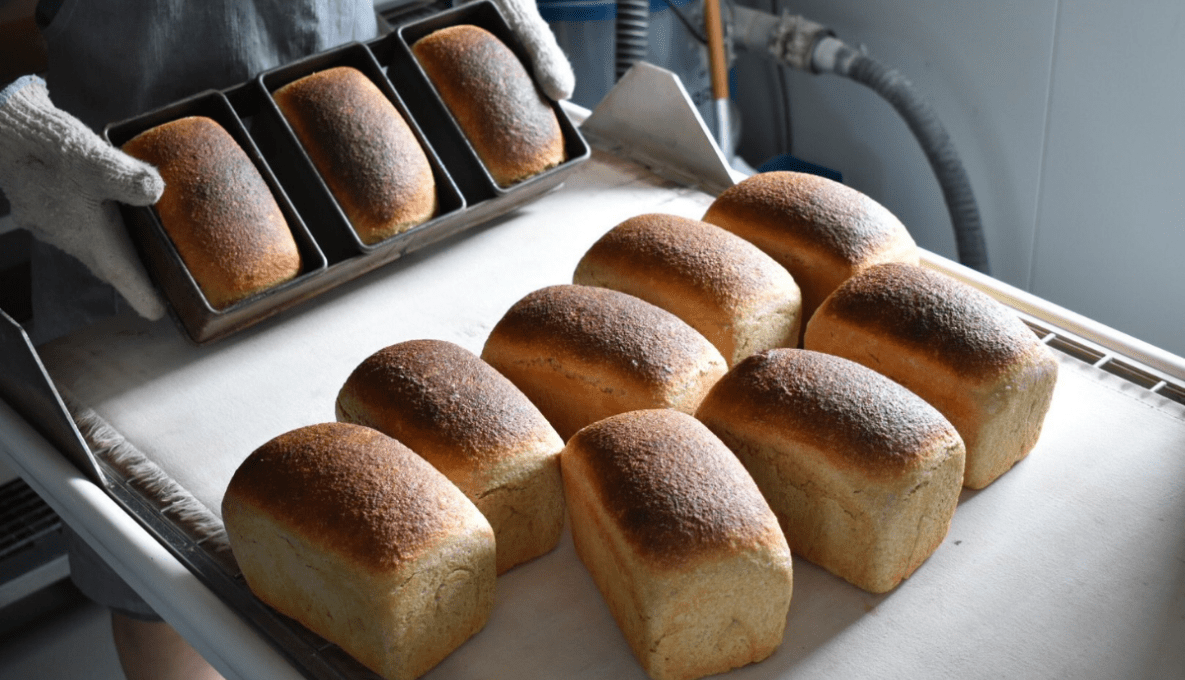
“It’s quite novel, the approach to agriculture we’re looking at. It’s a redesign of current annual cropping practices,” said Matt Newell, a perennial cereals research officer with the NSW Department of Primary Industries (NSW DPI) – who sees a very big future for perennial wheats in Australia.
Matt has been researching Australian-grown perennial wheat varieties in Cowra, NSW, since 2008, which deliver a grain wheat harvest, increased carrying capacity, and – with their significantly longer lifespan – a host of sustainability benefits.
Collaboration uncovers potential of perennial wheat as high-value food crop
Related organisations


Annual wheat is the cornerstone of Australia’s cropping industry, accounting for an estimated $9.7 billion of Australia’s $35.5 billion gross value of crop production in 2020-21. So dominant are annual crops that, even in a mixed farming system, production timetables are geared around their life cycle.
But new trials and changing consumer demands may see the increasingly more sustainable perennial wheat crops giving their annual predecessors a run for their money.

With the support of AgriFutures Australia, the NSW DPI has established an early-stage cluster of researchers and industry end-users to guide development of this new crop to target the premium artisan grain market. The potential applications and quality attributes of eight early-generation perennial wheat lines were tested by Australian brewers, bakers, and food manufacturing giant, Uncle Tobys.
With all perennial wheat material at the NSW DPI facility being from the Northern Hemisphere, and no commercial breeding programs in Australia, Matt selected the eight lines which showed the most adaptability to our environment. Grain characteristics and function were considered, with the outputs – a range of beer, breads and breakfast cereals – presented to researchers and end-users at a two-day workshop held in Cowra in June 2021.
And the market feedback is clear: there’s real demand for a product like perennial wheat.
Interested in Australia’s emerging industries? Sign up for our newsletter here.
New generation grain crops purpose-bred for sustainability
Traditional annual crops, and their productivity have sustained growing populations – both locally and globally – but as you may have guessed annual crops must be planted every year while perennial crops do not. This simple difference goes a long way to take the pressure off farming systems – reducing the need for cultivating soil, resowing, and reducing other inputs, including fertilisers that collectively make perennials an attractive option.
“We can maintain all the ecological benefits that come from growing perennial plants, but still have the ability to produce grain and deliver food security, without degrading the resource from which those grains are produced,” said Matt.
Reducing the frequency of soil disturbance and using plants with deep root systems that explore more of the soil volume can increase carbon sequestration abilities and help to improve soil health. This can lead to reduced fertiliser needs, which decrease input costs and the carbon footprint of this key supply-chain ingredient.
Lowering carbon emissions on-farm is key in reducing the product’s overall carbon footprint. This means fewer carbon offsets being purchased by manufacturers and retailers to deliver carbon neutral supply-chains and meet sustainability targets.
It is these increasingly marketable benefits which have artisan brewers and bakers excited.
Topher Boehm from Wildflower Brewing and Blending, based in Sydney’s trendy Inner West suburb Marrickville, explained, “I am drawn to these grains for their agricultural benefits, as well as their ability to be readily substituted into modern agricultural practices.” With a Drink Easy award for Australia’s Best Beverage under his belt, Topher’s endorsement is a shot in the arm for the emerging perennial wheat industry.
RELATED COMMERCIAL OPPORTUNITY: Ultra low gluten barley, known as Kebari
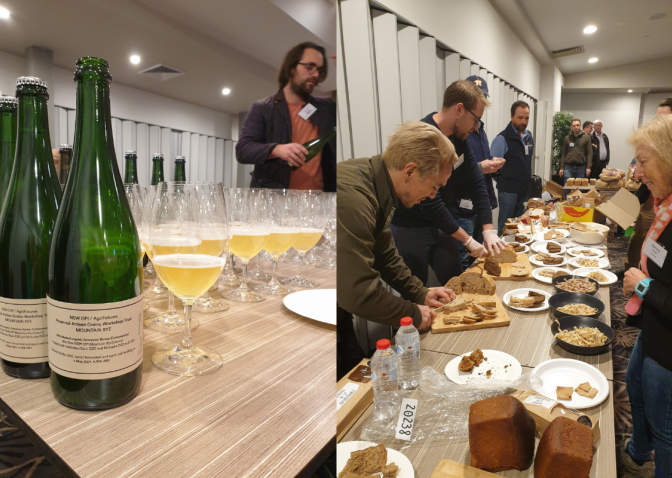
Complex flavour heightens end-user interest
While the sustainability benefits of perennial wheats were understood before the trial, the complex flavours and superior nutritional properties inherent in perennial wheats really took workshop participants by surprise.
Emily Salkeld from Small World Bakery in Langhorne Creek, South Australia, explained, “Initially, we didn’t understand how grain can have a flavour and nutrition ‘identity’, because everything about the commodity flour system takes all of the curiosity and complexity away.”
Matt agreed, “Modern wheats have been bred for high white flour yield, which reduces the ash content and in turn, the mineral content and the flavour. Because perennial wheat develops a bigger root system, it can scavenge more of the soil for minerals increasing the nutritional components of the grain. Plus, it also takes on the flavour profiles of its perennial parent.”
RELATED: Fourth-generation SA farmers scout new markets for premium red lentils
He added, "Perennial wheat resonates with the artisan baker and brewer group, because they’re responding to consumer demand for sustainable grains that are healthy, and have complex flavour. The AgriFutures project shows, while we’re selecting for agronomic attributes such as perenniality and adaptability to our environment, we can also select for different flavour profiles to meet end-user needs. The next step will be taking the breeding lines with consumer appeal, to select for individuals that are more adapted to our environment from which to develop varieties.”
But it isn’t just artisan bakers and brewers who see the potential of a sustainable, flavour-packed perennial wheat.
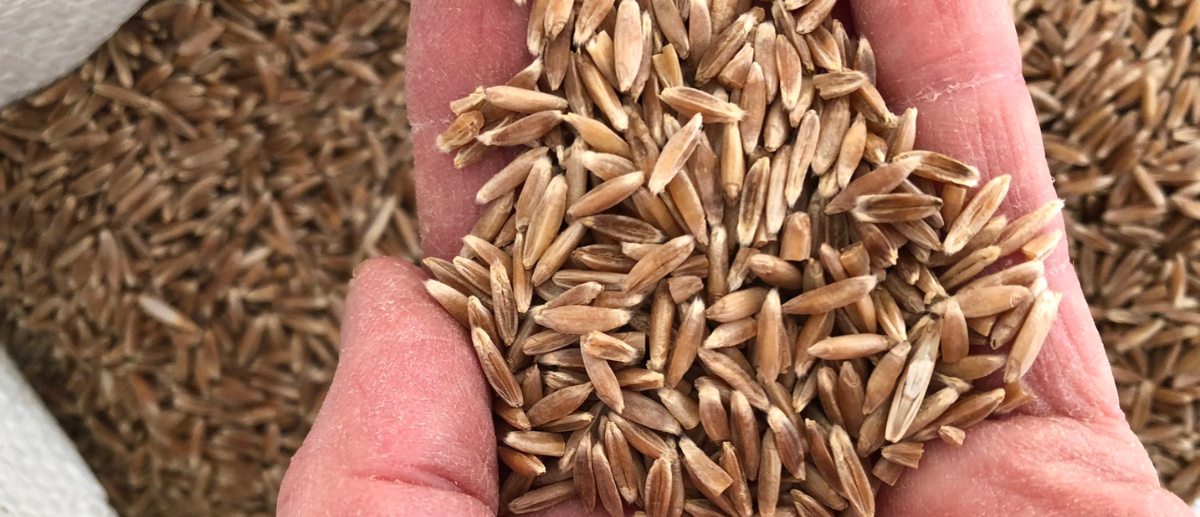
Uncle Tobys Cereal Technical Leader, John Pitcher said, “Uncle Tobys is always interested in grains that can deliver more nutrition for consumers and better results for farmers and the planet. Sustainably sourcing our grains through regenerative agriculture is, of course, part of this and perennial grains looks like one of the promising paths forward.”
Since milling the first oats back in 1893, the Australian food processing giant has garnered unparalleled experience of what makes a commercially successful grain product. “Through trials we have shown that perennial grains could be processed into a viable cereal,” said John. He also noted the smaller grain size of the perennial wheat material would present equipment challenges and require investment, but breeding programs that select for larger seed sizes can help to address this challenge.
“Further challenges lie in the agronomics: paddock yield, economics and commercial availability, however we are continuing to explore the potential such grains may offer,” said John.
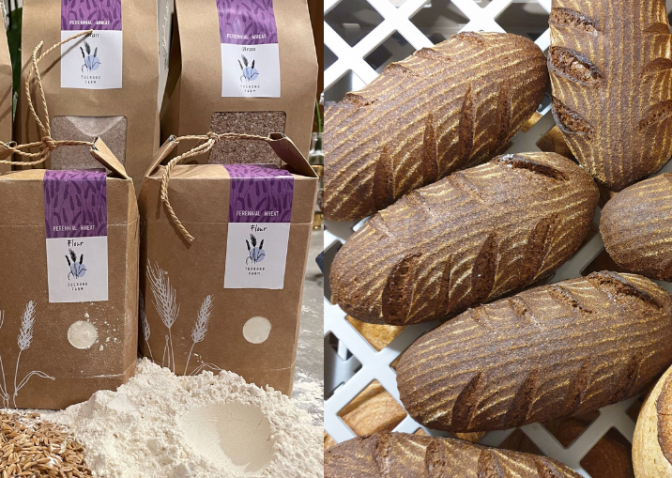
“Helping us understand what the market wants, and how to supply that”
Access to end-user feedback – both good and bad – at such an early stage in the development of an emerging industry offers a tremendous advantage. AgriFutures Australia Emerging Industries Manager, Laura Skipworth said, “The value in this project was in bringing together the processors and end-users who have the touch point to the market, with the researchers who are there on the ground. This assists us to identify how we will best grow the perennial wheat and where it will best fit in the farming system. It provides a really good mould for developing an emerging industry.”
The report, published in early October 2021, will help to inform future breeding activities and scope the pathway to market for perennial grains – with the goal of achieving significant industry growth.
“This project is helping us understand what the market wants, and how to supply that material,” said Matt.
The place for perennial wheat in Australian farming systems
Matt believes the best use for perennial cereals is as a dual-purpose crop, because there are trade-offs. While they produce a lot more biomass, perennial wheats yield less grain than an annual wheat crop – a natural consequence of conserving resources to enable regrowth into the next year.
“But if we can use that biomass to feed grazing animals, such as sheep and cattle, then we get this multifunctionality within the system so we can produce meat, wool and grain from the same area,” said Matt, without the annual input and labour costs.
RELATED: Stock-proof solar design set to optimise agricultural productivity
CSIRO modelling has shown that using perennial wheats as dual-purpose crops can lift overall farm productivity by about 40%, which Matt said is largely attributable to increased carrying capacity.
“It’s the same sort of principles as with other dual-purpose crops, but with more flexibility. Once they’re established, you’ve got a longer period of grazing than what you’d have with an annual crop. The perennials start regrowing after harvest, so you’ve got an opportunity for grazing through until early spring, before you lock them up for seed production.” Said Matt.
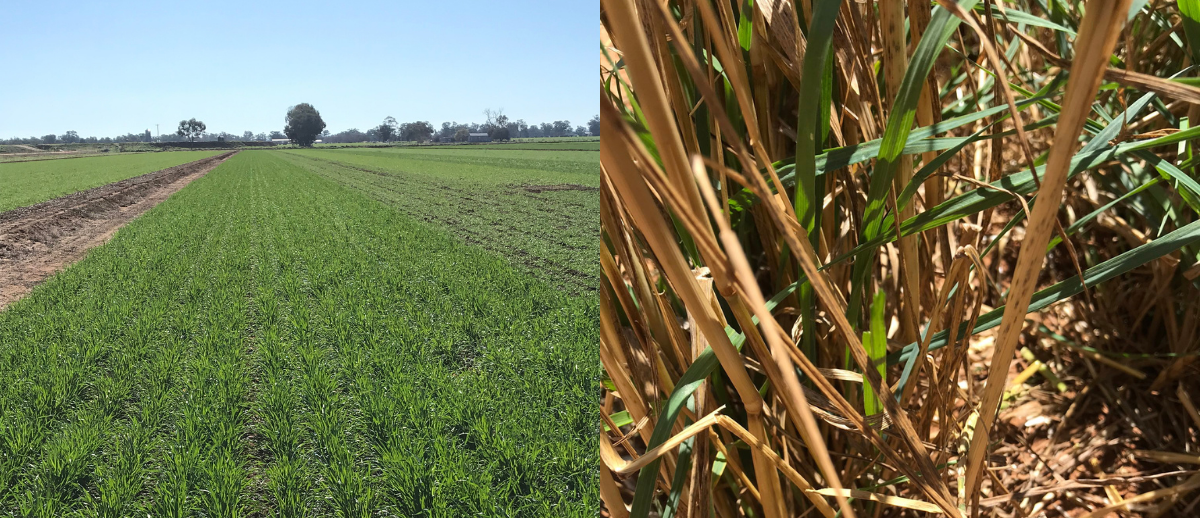
Matt NewellFarmers get a longer window in which to make decisions, allowing them to be better informed about how commodity markets are running, or what the seasonal outlooks are. The farmer can use that information to make better decisions on whether to target grain production or continue grazing.
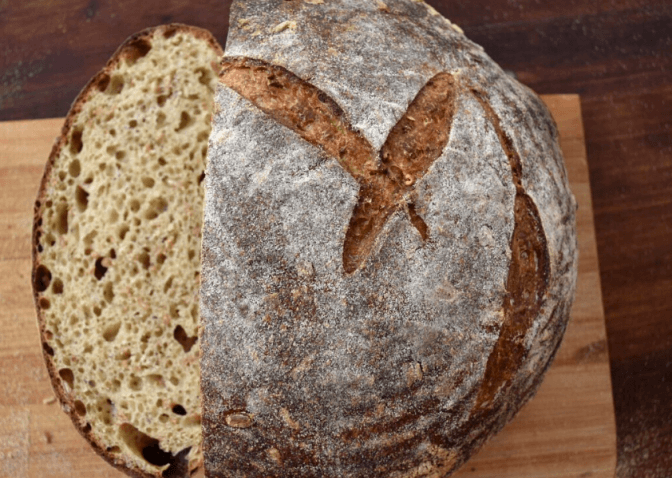
RELATED: Optiweigh takes the guesswork out of livestock weight monitoring
Reframing what constitutes ‘yield’ is key, Emily noted. “With perennial wheat, the yield includes your animal protein, the functionality of your soil, your grain, the end use, and how people value it. This is why we’re so enthusiastic. It really is not trying to replicate something that’s failing. It’s actually providing further options that are just so hopeful.”
While Australian-grown commercially available perennial wheat is still a way off yet, Emily thinks it will be worth the wait.
“We have a close connection with our customers, and they really like the sustainability backstory. They’re all aware that annually cropped cereal grains may not be that great for the environment and they’re asking us, ‘What are you doing about it?’ So, this gives us one part of the solution.”
Read more from the Perennial Artisan Grains Workshop.
Explore more AgriFutures Australia research projects.
-crop-850x675.png)
Looking for engagement?
Showcase your commercialisation opportunity today.
Talk to our team to discuss how growAG. can connect your innovation to industry.
Have questions? Find answers to our most frequently asked questions on research projects, commercial opportunities, organisations and more.
